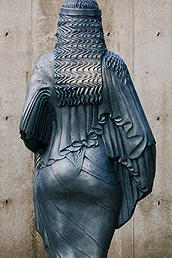Fiction Review
Michael Hingston
The Evolution of Inanimate Objects: The Life and Collected Works of Thomas Darwin (1857-1879)
by Harry Karlinsky
Vancouver, BC: Insomniac Press, 2010
232 pp. $19.95
If you stick to the meat of its story – from, say, pages 11 to 207 – then Harry Karlinsky’s debut novel is an inventive, brainy look at the unintended side effects of Victorian science in the wake of Charles Darwin publishing his Origin of Species in 1859. Presented as a sort of anthropological collage, mixing correspondence, drawings, and lightly academic narration, The Evolution of Inanimate Objects tells the clouded life story of Darwin’s youngest son, Thomas. It is a perplexing one, moving from a quiet childhood to a promising stint at Cambridge, to (of all places) an asylum in London, Ontario, where a sudden bout of tuberculosis ends Thomas’s life at just 22 years old.
After Origin, many scientists realized that Charles’s theories of evolution could also apply to other fields of study. The younger Darwin is one of them. What seals Thomas’s fate, however, is his unique decision to investigate how natural selection affects the world of cutlery. He purchases, studies, and catalogues hundreds of “hybrid artefacts” (140) like olive spoons. He thinks long and hard about one certain tine on a pastry fork, even going so far as altering his diet so as to use the utensil at every meal.
Thomas gets so focused on his work that he does not notice the crucial and spectacular flaw in his logic. In a manuscript he submits to the influential journal, Nature, Thomas argues that spoons, knives, and forks actually procreate with one another. According to his skewed theory, an olive spoon is the evolved offspring of a spoon and fork. Faced with rejection, Thomas is already so mentally fragile that he ups and flees to Canada.
A reader familiar with history will note, of course, that Thomas did not really exist. Charles and Emma Darwin had ten children, not eleven.
And a reader familiar with the history of literature will in turn note that this blend of fact and fiction is itself part of a long tradition. Up until page 207, The Evolution of Inanimate Objects uses this one obvious falsehood to gleefully smudge the broader historical record. It takes a much more thorough investigation to figure out that almost everything else in the book really did exist, in some capacity. All letters and diary entries mentioning Thomas are fakes, but the people who wrote them and the collections they are supposedly taken from are real. Even a scholarly book, with a title as cartoonish as Victorian Lunacy and which is slipped into the easily skimmable bibliography section at the back, checks out. There are virtually no seams showing.
It’s curious, then, that Karlinsky inserts a lengthy author’s note at the end, one that effectively smothers all of the preceding merriment. In the note, he writes that the “open acknowledgement” of the complete fabrication of his protagonist “distinguishes it from those rare publications which are presented as if true, and whose falsification remains concealed.” But surely he’s playing by science’s rules here, not literature’s – the book is shelved in the fiction section, after all. So much disclosure is, frankly, a bit of a drag. So if he is not out to throw a wrench into the wheels of history, what exactly is Karlinsky’s project? The fictional Thomas’s misguided investigations could be seen as a dark riff on scientific method gone awry; yet the novel has too much reverence for Charles Darwin and science generally for that interpretation to hold up.
The main weakness is that despite Karlinsky’s efforts to create a credible protagonist through a combination of fictionalized and authentic historical documents, Thomas remains an essentially flat character. He is never physically described in any detail, and the few private letters we read from him do not reveal much else about his psyche. The cause of his madness, too, is largely unexplored.
The closest we get to an underlying theme is one that is closely connected to evolution itself: the long shadows cast by our forbears. And in Thomas’s case, his biological and scientific ancestors are one and the same. It is therefore telling that one of the things that push him over the edge is his father’s gentle reminder to remember to cite those scientists whose work he builds upon.
It also may explain why the novel’s final figure is an image not of Thomas but of an aging Charles himself, his expression severe, his face equally obscured by a long white beard, and the shadow cast upon his eyes by the brim of his hat. For his fictionalized youngest son, notions of heredity and succession are a decidedly mixed blessing.




